|
BULB LOG 31 --- 1st August 2007
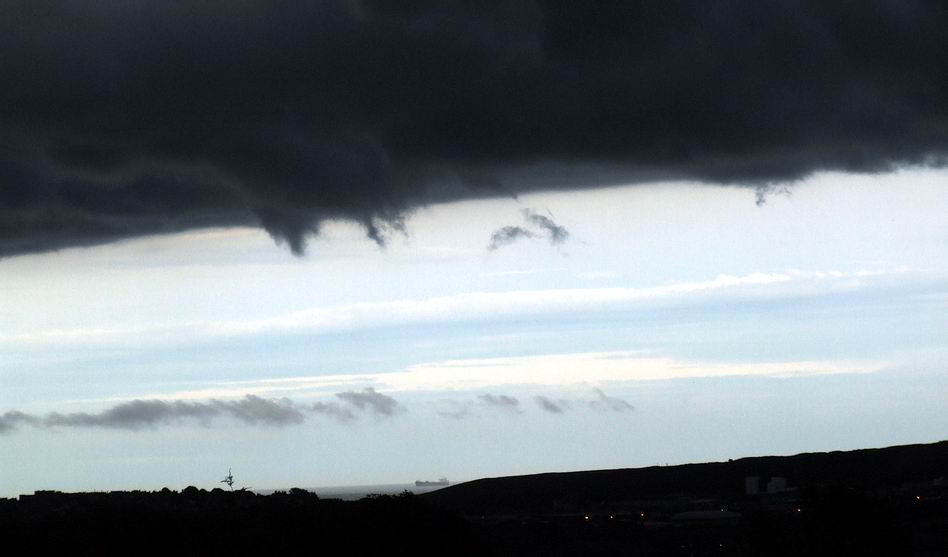
Storm Cloud
I pictured one of the most dramatic storm clouds I have ever seen, looking down from our house over Aberdeen towards the sea, last Thursday evening. Luckily it did not discharge its contents over the City but brought behind it another night of steady rain.
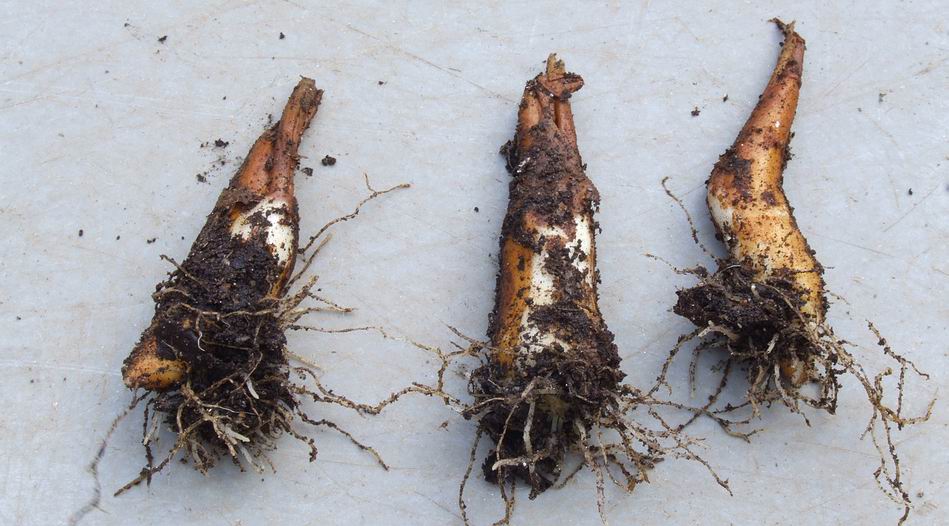
Erythroniums in root
Despite the wetness I have to re-pot as much as I can and whenever it is dry I am working outside on the bigger boxes of bulbs and when it rains I retreat into a glasshouse or potting shed to re-pot some of the smaller pots. The wetness of the compost brings several problems and one of these is that many bulbs are already starting to make new roots. If you remember we had a very warm dry April which sent many bulbs dormant earlier than normal and since then we have had rather cool if not cold wet weather so many bulbs now believe it is autumn already - hence the early roots on these Erythronium.
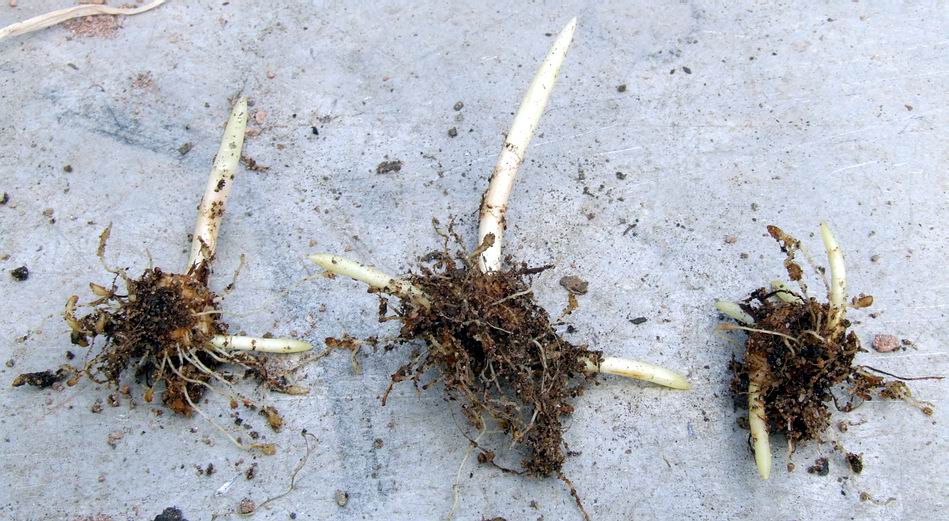
Crocus nudiflorus
Likewise these Crocus nudiflorus not only have new roots and stolons but the flower buds are also well extended, making it almost impossible to re-pot them without doing harm.
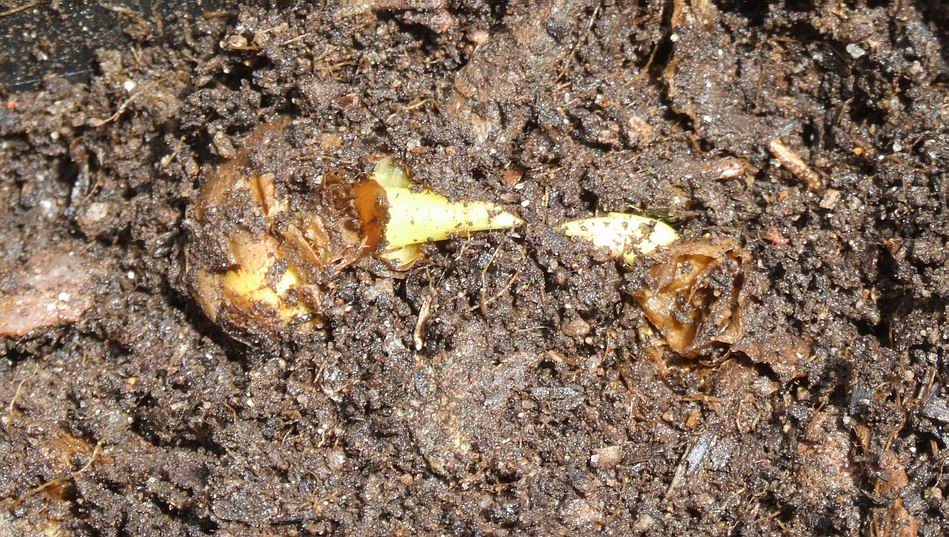
Corydalis turtschaninovii
I have often witnessed early roots on Crocus nudiflorus and some Erythronium but I was very surprised when I tentatively worked my way down into a pot of Corydalis turtschaninovii. As you can tell from the picture the compost is very wet but as this is about the last of the bulbous corydalis to flower I expected the tubers would be dormant. What a surprise I had to see the 1cm shoots already showing even though they will not flower until next May.
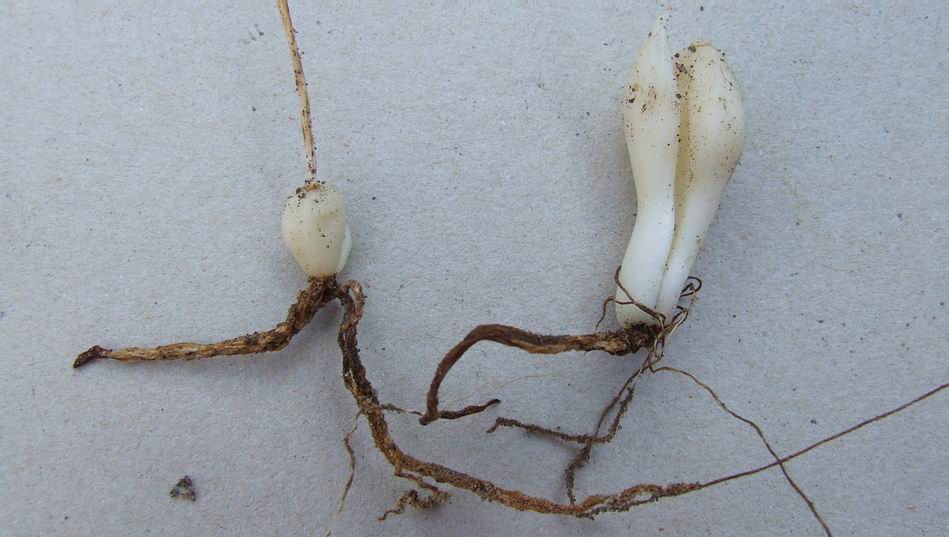
Fritillaria purdyi bulbs descending
Len Rhind of British Colombia in Canada has an interesting question in the bulb log feedback pages of the forum, he writes -
"Hi Ian,
The photos of the elongated bulbs that are pulling themselves deeper into the pots are really interesting. I have read many times that they will do this, but no one has ever said what makes them do it. I would be interested to read your opinion on what mechanism is at work here to make a very simple living structure somehow 'aware' that it needs to be at a certain depth and what benefit it would gain from being there. Also, do you think that bulbs in your collection would be acting differently than wild ones?
A lot to ask, I know, but I am curious.
Cheers,
Len."
It is fascinating how they do this and there are several factors involved some seeds are shed on the surface so if the seedling bulbs are to survive they have to get underground.
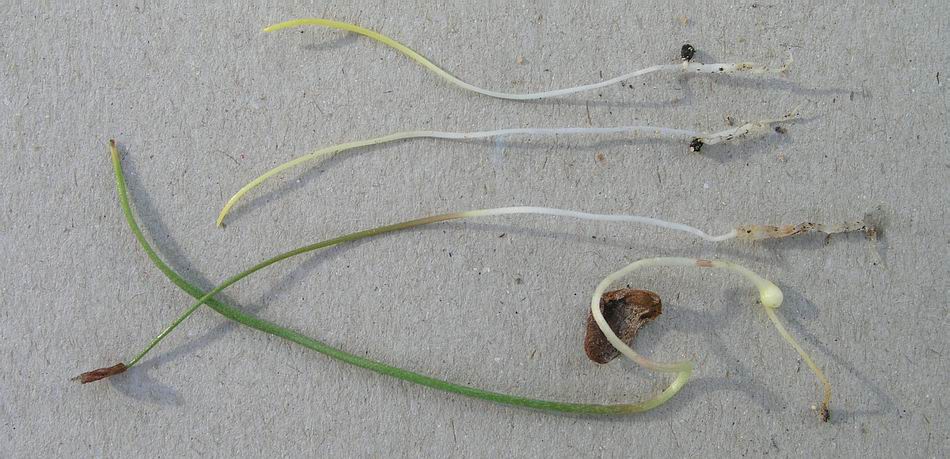
Narcissus and fritillaria seeds germinating
Fritillaria seeds send a stem down into the compost and the seedling forms towards the bottom of this stem, so it has evolved to plant itself. The lower two seedlings pictured above are Fritillaria species; the seed was sown on the surface and the surface level is obvious from where the stem turns from green to white - you can see the new bulbs forming towards the bottom of these stems. With some other bulbs, like Narcissus, the small bulb forms beside the seed as seen in the upper two seedlings in the picture. The slight elongated swelling at the bottom of the stem is the young bulb forming beside the seed - again the surface level is indicated where the stem turns from green to white. This narcissus seed was sown deep if it was sown on the surface the young bulb has to make its own way into the compost over the next few growing seasons. When we repot the bulbs if we do not get the depth correct the bulb will elongate to pull itself down often forming a fat contractile root as seen above to aid it.
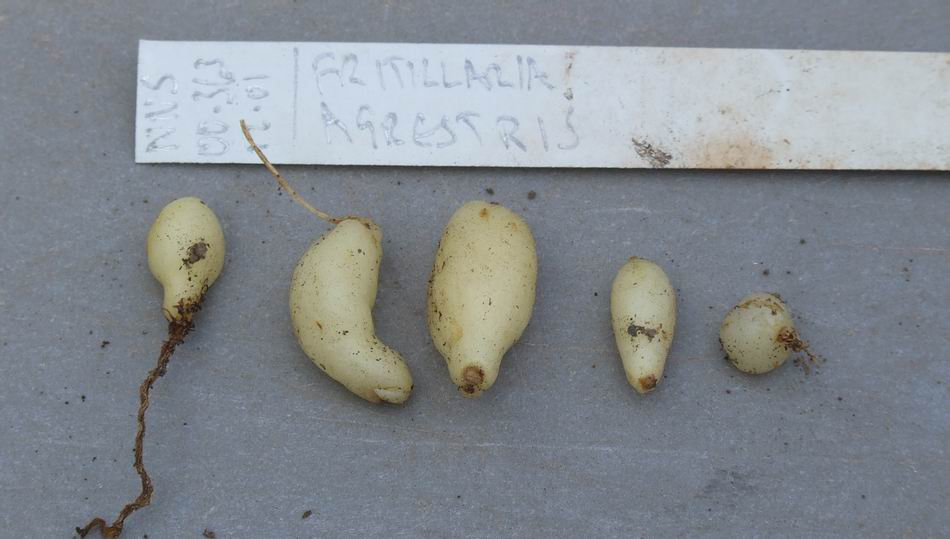
Fritillaria agrestris seedlings descending
What the plant is probably seeking is a stable cool moist environment: the cooler it likes the soil to be, the deeper it is likely to go. This brings us to Susan Band's point and observation that her Erythronium revolutum were smaller and longer this year than normal - she correctly surmises that this is as a result of the warm dry April when the new bulbs were forming. They obviously found these unusually warm conditions not to their liking so in taking themselves deeper than normal they are now a different size and shape.
So: the depth a bulb will take itself to is dependent on the environmental conditions particularly the moisture and temperature levels and variations on the depth will be found both in cultivation and the wild.
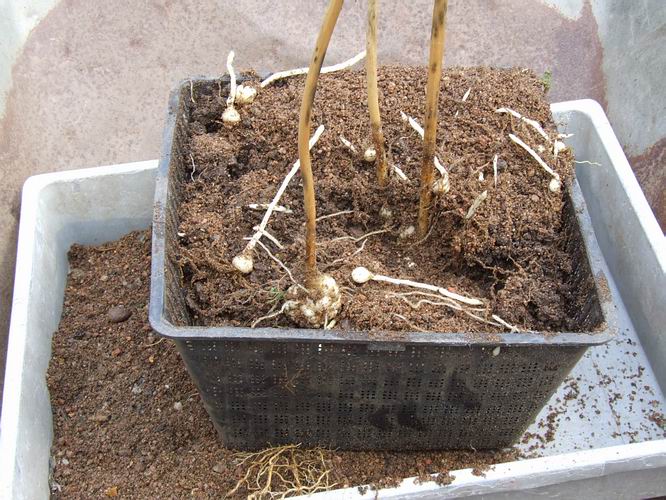
Fritillaria camschatensis
Having just given you the impression that you should be planting all your bulbs deeper, I am now going to prove that growing bulbs is never so simple that a single rule will cover all - Fritillaria camschatensis likes to be near the surface. Notice how near the top these bulbs are growing: that is not where I planted them a number of years ago. For the first few years after I planted them I was surprised and disappointed that they did not flower then two years later they started to flower and now I am replanting them for the first time I have discovered their secret.
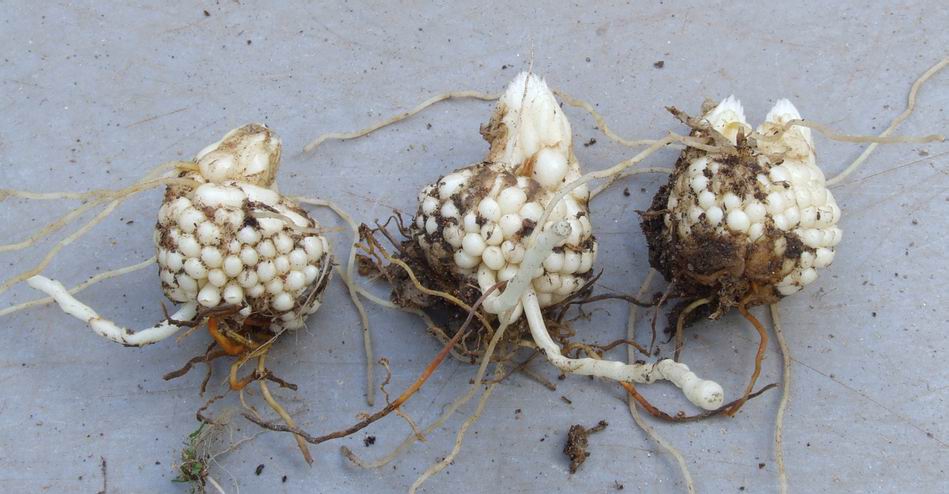
Fritillaria camschatensis bulbs
They are fascinating bulbs quite unlike any other frit - notice the stem shoots pushing through the top and the one on the right has two stem buds so should produce two flowering stems, each of which will form a new flowering sized bulb.
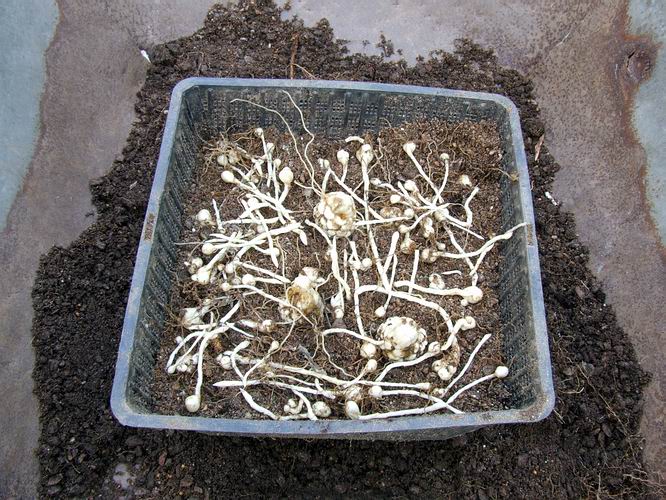
Fritillaria camschatensis planted
Having refreshed the compost I am taking care to plant them at the same level as I found them along with all the funny wee stolons, with juvenile bulbs on the end, which they send out to extend their colony.
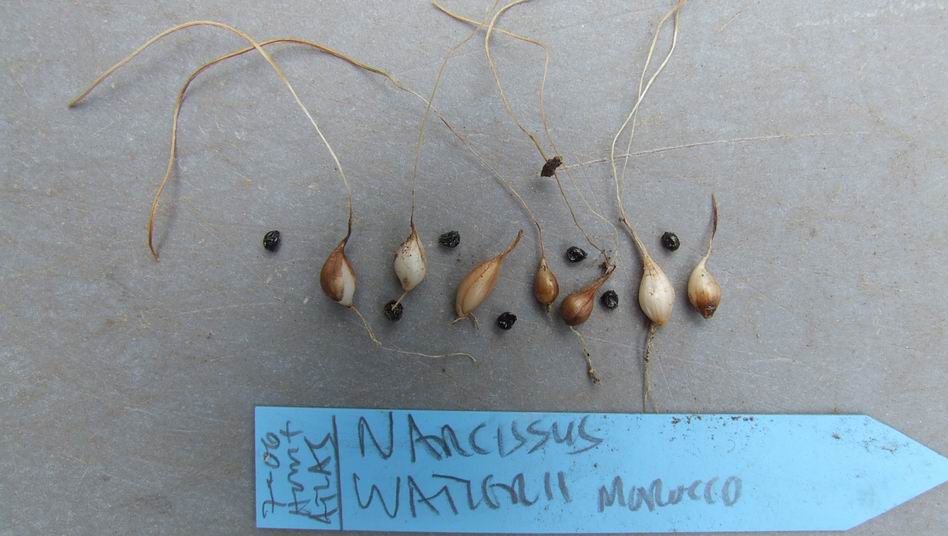
Narcissus watierii one year seedlings
I mentioned above that Narcissus bulbs form beside the seeds and that is why I sow my narcissus seeds deeply, at least half way down the pot. I do not usually re-pot until the end of the second year at least but I wanted to photograph the first year seedling bulbs along side the empty shiny black seed coat that they grew out from.
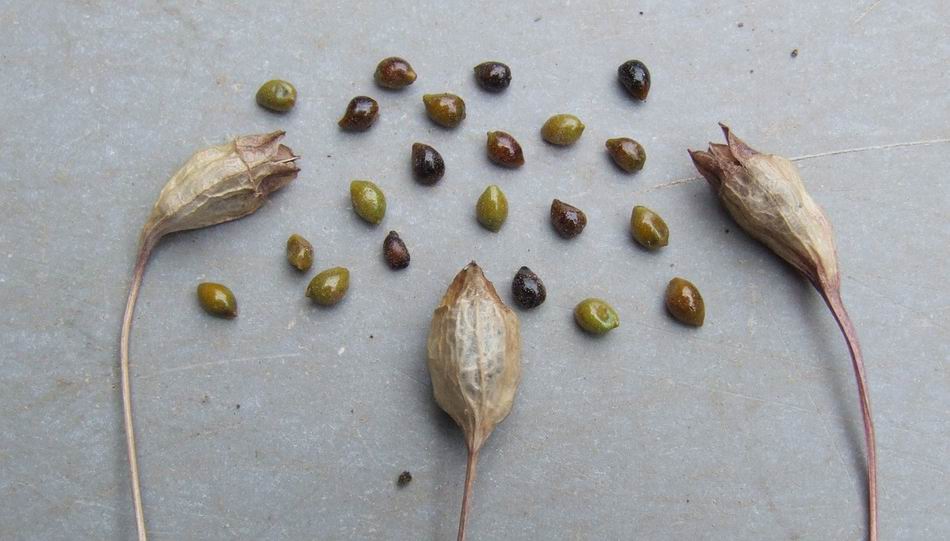
Tecophilaea seeds
I do exactly the same with my Tecophilaea seed sowing them at the same depth as I would plant the corms and this gives me excellent results.
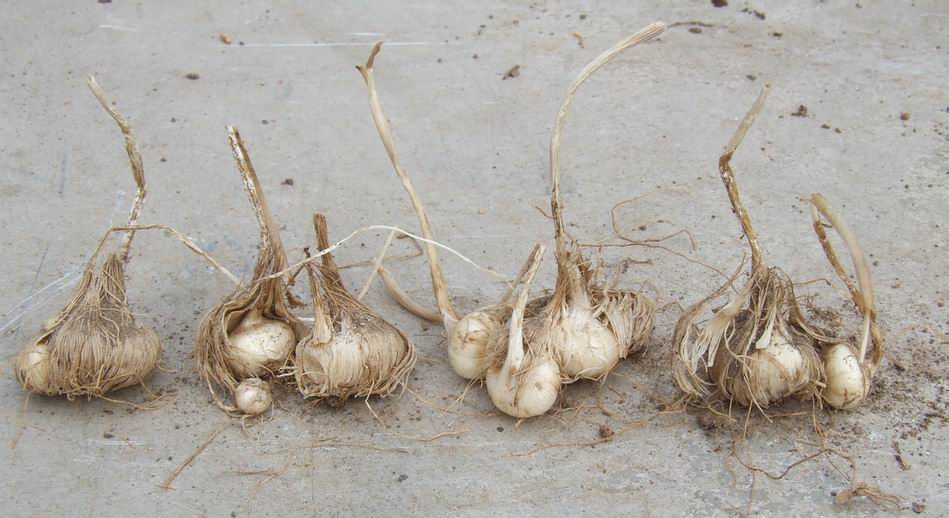
Tecophilaea corms increasing
Once they are mature, Tecophilaea corms increase well, often producing two or more offsets which can in a good year all be flowering size. Unfortunately this was not a good year as they were sent into an early dormancy by the unseasonably hot April weather. In a normal year our Tecophilaea would still be green in late June sometimes into early July so a shorter growing period has resulted in smaller offsets.
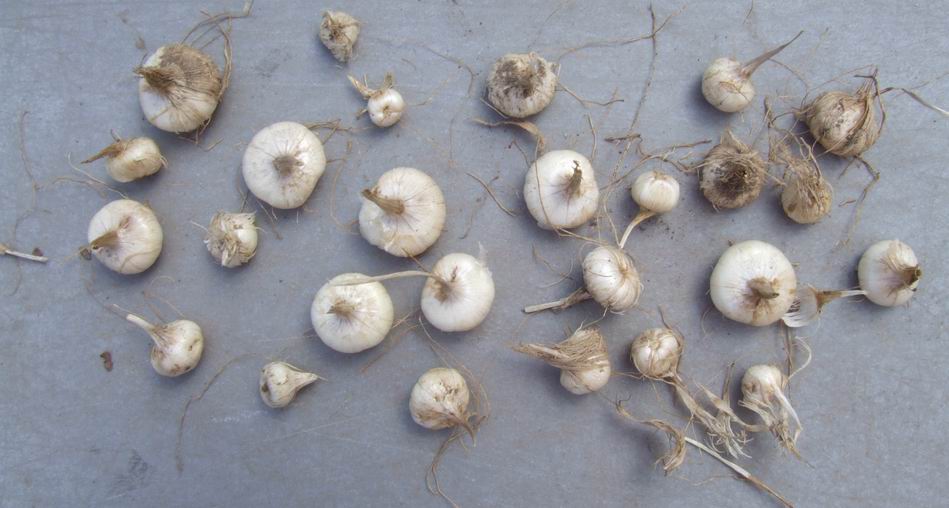
Tecophilaea corms
A gentle rub between my palms separates the offsets then I remove any of the loose tunics and stem debris, ready to replant them.
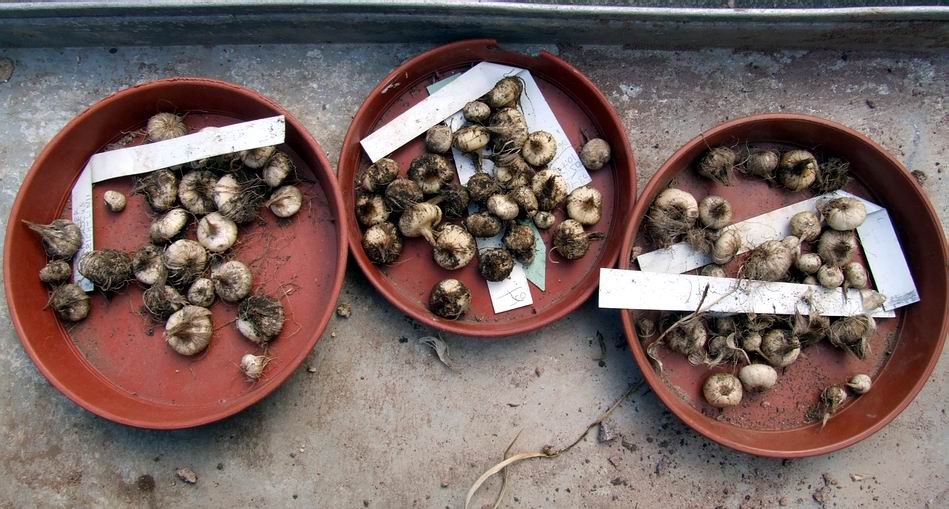
Tecophilaea corms wet
Due to a leak in the glasshouse roof I found some of the pots of Tecophilaea corms were pretty wet and could have been in danger of rotting if I just re-potted them in that condition.
A night in a plastic saucer dried them out nicely so I could tidy them up and replant them.
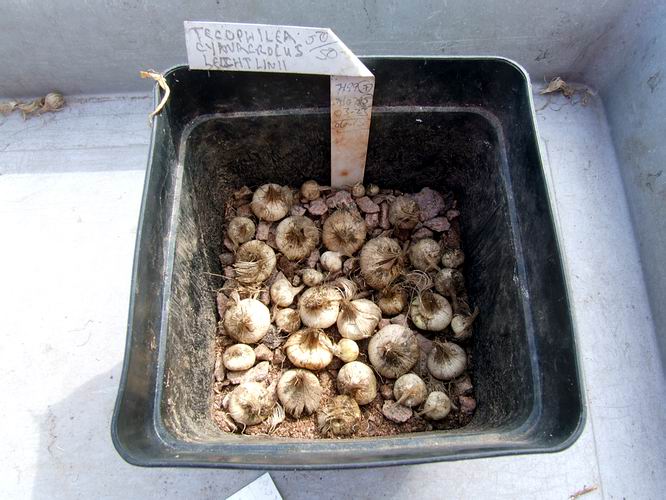
Tecophilaea corms potted
I find the best depth for Tecophilaea is to place them so that the top of the corms is just half way up the pot this normally gives a good flowering, seed set and an increase in the corms.

Blue Sky
At last we are seeing some blue sky and sunshine so I can press on with the re-potting but it is too late to help me with the bulbs that are already in root, they will just have to wait until next year.
^ back to the top ^
|

